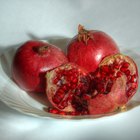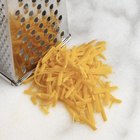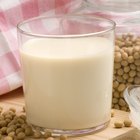
GeorgeDolgikh/iStock/Getty Images
Cheese melted over chips to make nachos, added to a casserole or included in a dip is a high-calorie, high-fat indulgence. Melted cheese is a source of bone-building calcium and phosphorus but also provides high amounts of cholesterol and sodium. Before making melted cheese a regular part of your diet, understand the impact it may have on your nutrition intake.
Density
Melted cheese contains more fat and calories than shredded or diced cheese because there is no air taking up space in each serving. For example, a cup of diced cheddar cheese weighs 132 g, a cup of shredded cheddar cheese weighs 113 g and a cup of melted cheddar weighs 244 g. By melting cheese, you get more cheese per serving – and more of the calories and nutrients.
Calories and Macronutrients
One cup of melted cheddar cheese contains 983 calories. Cheese is low in carbohydrates, with a cup of melted cheddar offering just 3 g. You also get 61 g of protein by consuming a cup of melted cheddar. Of the 81 g of fat, 51 g are saturated. The American Heart Association recommends limiting saturated fat intake to less than 7 percent of total daily calories. For a 2,000 calorie diet, this is just 15 g per day.
Additional Nutrition Information
Although melting the cheese concentrates the calories and fat, it also concentrates the nutrition. One cup of melted cheddar provides 176 percent of the recommended dietary allowance for calcium, based on a 2,000-calorie diet. It also provides 125 percent for phosphorus, 49 percent for vitamin A, 54 percent for riboflavin, 48 percent for selenium, 51 percent for zinc and 34 percent for vitamin B-12. Melted cheese contains smaller amounts of additional vitamins and minerals, including 17 percent for magnesium, 10 percent for pantothenic acid, 11 percent for folate, 9 percent for vitamin B-6, 9 percent for vitamin K, 7 percent for vitamin D and 9 percent for iron.
Cholesterol and Sodium Concerns
One cup of melted cheese provides 256 mg of cholesterol – nearly a full day’s worth. The American Heart Association recommends sticking to 300 mg of cholesterol or less each day to protect heart health. If you have been diagnosed with high cholesterol, you are advised to stay below 200 mg daily. The cup of melted cheddar also provides 1,515 mg of sodium. The Institute of Medicine encourages limiting sodium consumption to 1,500 mg per day.
Considerations
Other types of cheese may have slightly different nutrition information when melted because they have different nutrition information when shredded. Part-skim mozzarella is slightly lower in fat and calories than cheddar, for example. If your recipe calls for melted cheese, measure it before melting and stick to moderate 1- to 1 1/2-oz. portion sizes to keep calories and saturated fat in check.
Related Articles

Nutrition Information on Blueberries

Does Benefiber Lower Cholesterol?

Can I Use Milk Instead of Heavy Cream ...

Greek Yogurt Instead of Butter in Baking

How Much Pomegranate Juice Should One ...
How to Cook Old Fashioned Oats in the ...
Calories in Candied Walnuts

Health Benefits of Lox Vs. Baked Salmon

The Calories in Garbanzo Beans

Feta Cheese Nutrition

How to Make Nachos Using Shredded Cheese

How to Cook Elbow Macaroni in Milk

How to Cook Penne Rigate Noodles in the ...

How to Make Scrambled Egg With Spinach

How Many Calories Are in 1/4 Cup of ...

What Does Shoe Width E, EE, D, and DD ...

How to Make Glaze for Donuts With Milk ...

Can I Substitute Dry Milk Powder for ...

Is Soy Milk Casein-Free?

Havarti Cheese Nutritional Information
References
Writer Bio
Andrea Boldt has been in the fitness industry for more than 20 years. A personal trainer, run coach, group fitness instructor and master yoga teacher, she also holds certifications in holistic and fitness nutrition.
Photo Credits
GeorgeDolgikh/iStock/Getty Images